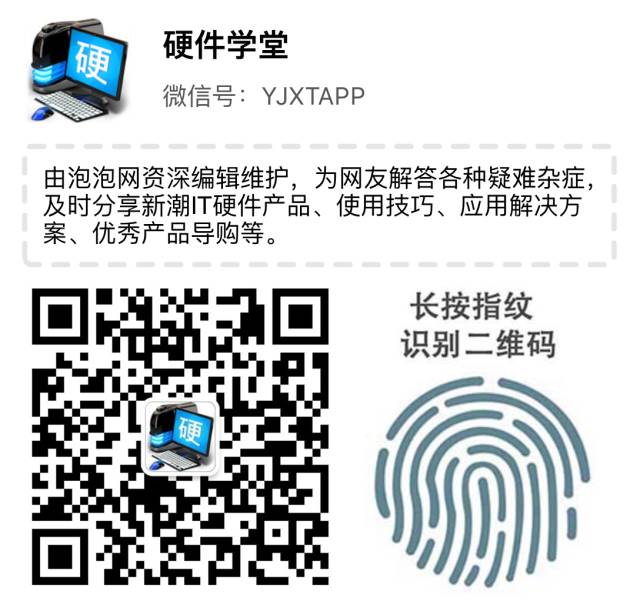With the advancement of technology, smartphones are no longer just simple communication tools, but rather versatile portable electronic devices. The virtual functions of smartphones, such as interaction and gaming, are achieved through the powerful computational capabilities of the processors, but functions that connect to reality are realized through sensors. This article organizes common sensors found in smartphones to help everyone understand their principles and uses.
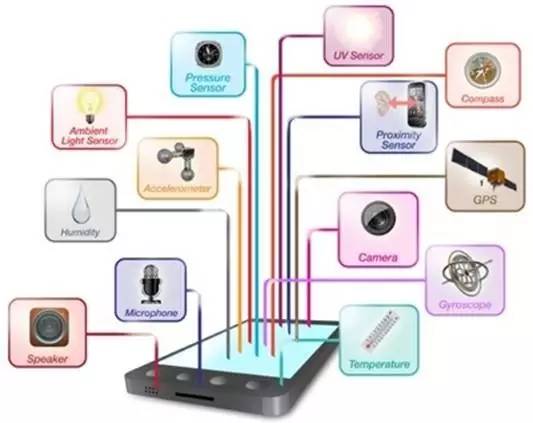
1. Light Sensor:
Principle: A photoresistor generates varying electric currents when it receives external light, allowing it to sense ambient light brightness.
Uses: Typically used to adjust the automatic backlight brightness of the screen, increasing brightness during the day and decreasing it at night for better visibility without glare. It can also be used for automatic white balance in photography. Additionally, it can work with the distance sensor below to detect if the phone is in a pocket to prevent accidental touches.
2. Distance Sensor:
Principle: An infrared LED emits infrared light, which is reflected by nearby objects. The infrared detector measures the intensity of the received infrared light to determine distance, generally effective within 10cm. The distance sensor usually has both emitting and receiving devices, making it relatively large.
Uses: Detects whether the phone is pressed against the ear during a call to automatically turn off the screen to save power. It can also be used to automatically unlock and lock the screen in cases like flip covers or pocket mode.
Note: The Position of the Light Sensor and Distance Sensor
Light sensors and distance sensors are generally placed together around the earpiece on the front of the phone. However, this creates a problem as having too many holes or black bars on the phone’s forehead can be unattractive. Therefore, Apple has been trying to find ways to reduce or hide these openings. Phones with black panels can easily conceal these two sensors, but it is more challenging with white panels:
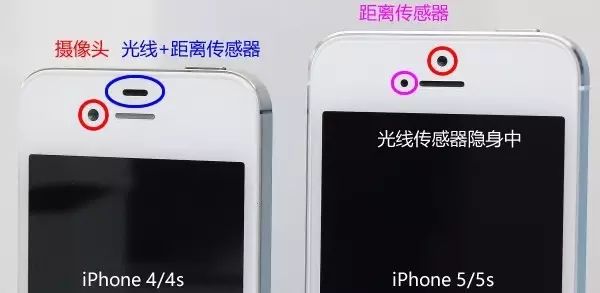
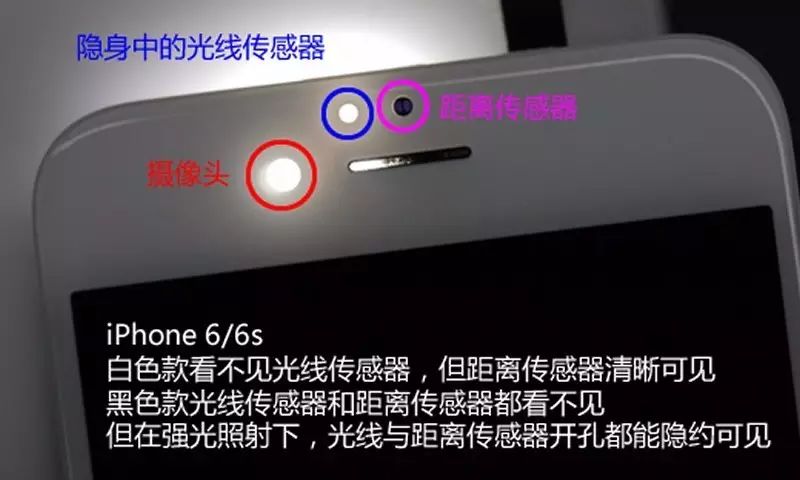
Starting from the iPhone 5, Apple has made the light sensor white, effectively hiding it. However, many domestic smartphone manufacturers are currently unable to achieve this; they can only choose smaller sensors, combining the light and distance sensors into a smaller rectangular shape or a larger circular shape similar to the camera, which looks relatively better. The sensor on the Hammer phone is also rectangular but is placed inside the earpiece, thus hidden.
3. Gravity Sensor:
Principle: Achieved through the piezoelectric effect, where a heavy object inside the sensor is integrated with a piezoelectric sheet. It calculates the horizontal direction based on the voltage generated in two orthogonal directions.
Uses: Intelligent switching between horizontal and vertical screens, photo orientation, and gravity-sensing games (like rolling a marble).
4. Accelerometer:
Principle: Similar to the gravity sensor, it also uses the piezoelectric effect to determine acceleration direction in three dimensions but consumes less power and has lower accuracy.
Uses: Step counting and determining the orientation angle of the phone’s placement.
5. Magnetic Field Sensor:
Principle: Anisotropic magnetoresistive materials change their resistance when they detect slight changes in magnetic fields, so the phone must rotate or shake a few times to accurately indicate direction.
Uses: Compass, map navigation direction, metal detector apps.
6. Gyroscope:
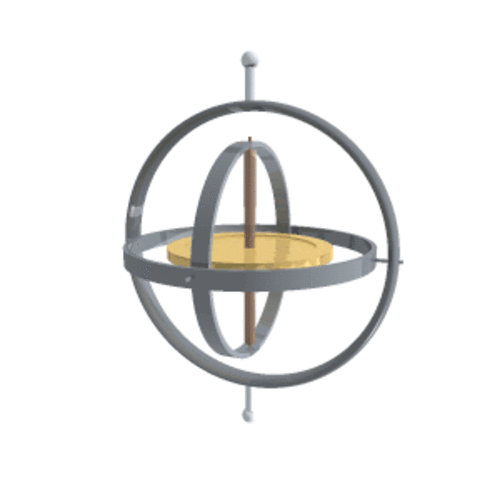
Principle: Based on the conservation of angular momentum, a rapidly spinning object (the gyroscope) maintains its rotational axis direction unless affected by external forces. The gyroscope operates on this principle to maintain a certain direction. A three-axis gyroscope can replace three single-axis gyroscopes, measuring six directions simultaneously for position, movement trajectory, and acceleration.
Uses: Motion sensing, shaking the phone to activate certain functions, controlling perspectives in games by translating/rotating/moving the phone, VR virtual reality, and implementing inertial navigation based on object motion when GPS signals are unavailable (such as in tunnels).
7. GPS:
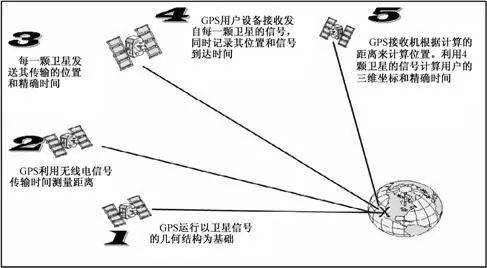
Principle: There are 24 GPS satellites operating in specific orbits around the Earth, each continuously broadcasting its current position coordinates and timestamp information to the world. The GPS module in the phone receives this information through antennas. The chip in the GPS module uses the instantaneous positions of the rapidly moving satellites as known starting data, calculating the distance from the satellite to the phone based on the timestamp difference between when the satellite transmitted its coordinates and when the phone received them, using the method of spatial distance back intersection to determine the position coordinates of the point being measured.
Uses: Maps, navigation, speed measurement, distance measurement.
8. Fingerprint Sensor:
The mainstream technology currently is capacitive fingerprint recognition, but starting this year, ultrasonic fingerprint recognition, which is faster and more accurate, is gradually becoming widespread.
Capacitive Fingerprint Sensor Principle: A finger forms one pole of a capacitor, while the other pole is an array of silicon chips. A microcurrent is generated through the microelectric field carried by the human body between the capacitor sensor and the finger, creating a capacitance difference based on the distance between the peaks and valleys of the fingerprint and the sensor, thus depicting the fingerprint image.
Ultrasonic Fingerprint Sensor Principle: Ultrasonic waves are commonly used to measure distances, such as in sonar systems for underwater topography mapping. The principle of ultrasonic fingerprint recognition is similar, directly scanning and mapping fingerprint textures, even capturing pores. Therefore, fingerprints obtained through ultrasonic methods are 3D, while capacitive fingerprints are 2D. Ultrasonic recognition is not only faster but also less affected by sweat and oil, with richer fingerprint details that are harder to crack.
Uses: Encryption, unlocking, payments…
9. Hall Sensor:
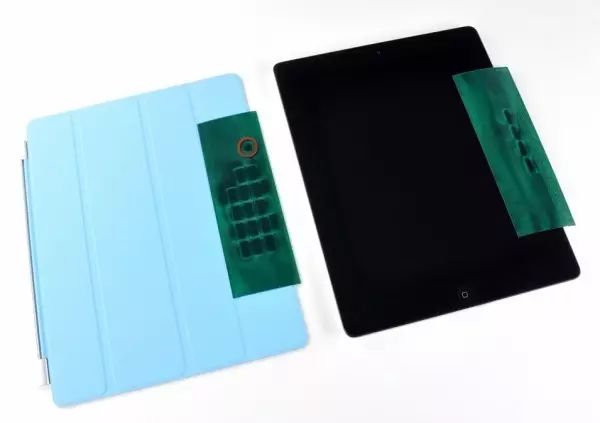
Principle: Hall effect, when an electric current flows through a conductor located in a magnetic field, the magnetic field exerts a force on the electrons in the conductor perpendicular to their motion, resulting in a potential difference at the ends of the conductor.
Uses: Automatic unlocking when the flip cover is opened, automatic locking when the cover is closed.
10. Pressure Sensor:
Principle: There are capacitive or resistive pressure sensors that connect a diaphragm with a resistor or capacitor. Changes in air pressure lead to changes in resistance or capacitance values, thus obtaining pressure data.
Uses: GPS calculates altitude with an error of about ten meters; the pressure sensor is mainly used to correct altitude errors (to about one meter), and can also assist GPS in locating overpasses or floor positions.
11. Heart Rate Sensor:

Principle: Using a high-brightness LED light source to illuminate a finger, when the heart pumps fresh blood into capillaries, the brightness (depth of red) shows periodic changes like waves. The camera quickly captures this rhythmic interval, which is then calculated through an application on the phone to determine the heart’s contraction frequency.
Uses: Sports, health.
12. Blood Oxygen Sensor:
Principle: Hemoglobin and oxygenated hemoglobin in the blood absorb infrared and red light at different ratios. By shining both infrared and red light LEDs on the finger and measuring the absorption spectrum of the reflected light, blood oxygen levels can be measured.
Uses: Sports, health.
13. Ultraviolet Sensor:
Principle: Utilizing the photoelectric emission effect of certain semiconductors, metals, or metal compounds, a large number of electrons are released under ultraviolet light. Detecting this discharge effect allows the calculation of ultraviolet intensity.
Uses: Sports, health.
Conclusion:
The first seven sensors are standard in almost every smartphone;
The eighth sensor—fingerprint recognition—is becoming widely popular, with phones priced around six to seven hundred yuan also starting to include it, mainly due to the advent of mobile payment, which has increased demands for security and convenience;
The ninth sensor is commonly supported by official smartphone or tablet cases;
The last four are relatively rare, mainly targeting special user groups in outdoor, sports, and health areas, and are more commonly found in high-end Samsung phones; they are actually more prevalent in products like smartwatches and fitness bands.
Smartphones have long ceased to be mere communication tools; they have become all-encompassing personal assistant tools. People hope that smartphones can integrate any function, with practical and commonly used features being integrated, and even infrequently used but occasionally useful features being included. It is conceivable that future smartphones will integrate even more sensors.
Follow Hard Brother’s public account (Hardware Classroom YJXTAPP) to check out more exciting content.
